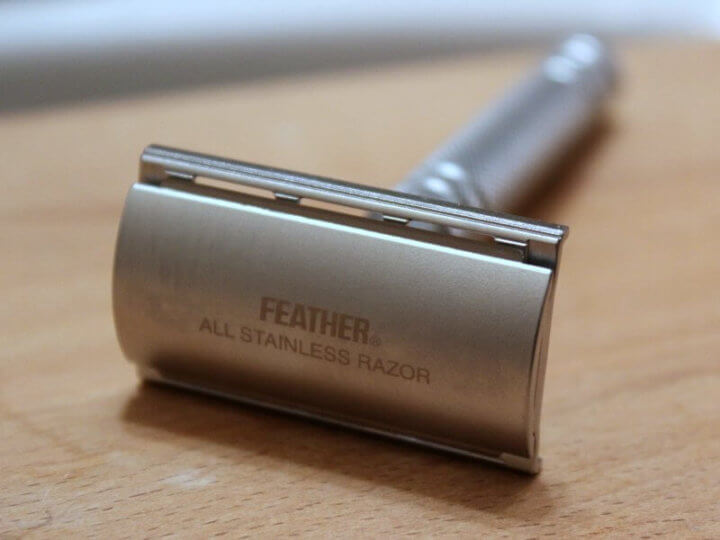
“What is the best double edge safety razor?” I get the question all the time. Unfortunately there isn’t an easy answer: the market is growing, changing and offering more choices than ever before. This is an update to a continuing series on Sharpologist!
Background
Multi-blade, pivoted cartridge razors that come from a few large multi-national companies are manufactured to a narrow set of specifications. Double-edge (DE) razors (and blades!) have a number of options to choose from. Lets look at some of the variables and see what stands out. Note that the terms double edge razor, DE razor, and safety razor are essentially interchangeable in the context of this article.
This article is especially aimed at the newcomer to “old school” wet shaving, though even experienced wet shavers will probably find some good nuggets of information. These are not the only products of course. If you know of a good DE razor not listed here be sure to mention it in a comment! All the prices in this article are in U.S. dollars and approximate.
Contents – Skip To
Criteria For The Best Double Edge Razor
So What Is The Best Double Edge Razor?
Double Edge Razor Price Ranges
Three Piece vs. two Piece vs. One Piece
What About Double Edge Razor Blades?
Criteria For The Best Double Edge Razor
Here are what I consider the “best” safety razors in several different categories. This is based on:
- Research of various specialty internet forums and blogs as well as the experience of Sharpologist editors, contributors, and readers;
- Reputation of the manufacturer and the general quality control of the razor’s production;
- Length of time on the market;
- Razor’s general availability, stability of design, and popularity;
- Razor’s over-all value (quality vs. price).
Remember the old adage, “Your Mileage May Vary!” I was not paid by any manufacturer for these recommendations.
So What Is The Best Double Edge Razor?
What’s the best safety razor? It depends on what you are looking for. Here is the summary and a ton of background information follow–feel free to browse Sharpologist for safety razor reviews of both popular and niche’ products.
Some links go to a geni.us “choice page” with a number of purchase alternatives. Amazon, Henson, Smallflower, Tatara, and West Coast Shaving links are affiliate. Here are picks broken down by intended use:
- Best Low Cost (About US $15) Razor: Baili BD176 (in North America available at even lower cost without the mirrored travel case at Groomatorium).
- Best Safety Razor For Beginners: Merkur 23C.
- Best “Popular” Razor: Merkur “Heavy Classic” 34c.
- Honorable mentions: Edwin Jagger DE89 series, Merkur 23C.
- Click/tap here to read Sharpologist’s article about the most popular safety razors by sales.
- Best Mild Razor: Henson Shaving AL13.
- Honorable mentions: Tatara Masamune, Feather AS-D2
- Click/tap here to read Sharpologist’s extensive article on mild razors.
- Best Open Comb Razor: Parker open comb razors, the 24C and the 26C (differing only in handle design. Both shave very well and are not overly-aggressive).
- Honorable mention: Merkur 1904.
- Best Aggressive Razor: Muhle R41 (there is also the R41 Grande with a heavier handle and the R41 Twist two-piece version, but they all share the same very aggressive head design).
- Best Continuously Adjustable Razor: Parker Variant.
- Honorable mentions: Rockwell T2 (in Stainless Steel), Rex Ambassador.
- Click/tap here for Sharpologist’s detailed article about adjustable razors.
- Best Multi Base Plate “Adjustable” razor: Rockwell 6S.
- Honorable mention: Karve Christopher Bradley
- Best “Slant” Style Razor: Parker Semi-Slant.
- Honorable mentions: Merkur 37C, RazoRock Superslant.
- Best Razor For Travel: Parker Travel Razor A1R.
- Honorable mention: Merkur Travel Razor.
- Best “Price Is No Object” Premium Artisan Razor: Wolfman Razors
- “Best Bang For The Buck” Premium Razor: Razorock Game Changer
- Best Reliable Vintage Razor: Gillette SuperSpeed, circa 1955.
- Honorable mention: Schick Krona, circa 1965.
Double Edge Razor Price Range
Probably the most obvious variable is going to be price–there’s no sense looking for something you can’t afford. I have seen new DE razor prices range from under US $10 to well over $400. Prices for many popular DE razors had generally been dropping but supply chain issues have seen them start to rise again.
Low End
The low end (under about US $20 or so) DE razor market has been flooded with razors from the Pakistan and China. Many of these safety razors have dubious quality control. Some brands simply purchase these razors, add their own logo and resell them at a substantial mark-up: this range is seeing more than its share of sketchy marketers, especially on Amazon.
There are some acceptable inexpensive DE razors–here is an article with some inexpensive safety razor reviews. They probably won’t become heirlooms for the grand kids but they should get you started with if you are on a budget. The under $20 range offers some reasonable products, including Baili series imported from the Far East, the all plastic Wilkinson Sword, the mostly-plastic Feather Popular, and the all (light) metal Weishi. Many of the lower-cost Maggard razors are also well-regarded.
Mid-Range (Most Popular)
The $30-$60 price range is where you will start seeing the more popular, better-made razors (though as just mentioned there are some over-priced examples too). Probably the most recognized models and the best safety razor brands in this range are the Edwin Jagger (EJ), Merkur, Muhle, and Parker razors.
Some other names that are getting more well-known for this price range include Fatip, RazoRock, and Phoenix Artisan Accoutrements. Even razor artisans who had previously been offering products at the upper end of the DE razor market seem to be recognizing the value of the price vs. performance ratio.
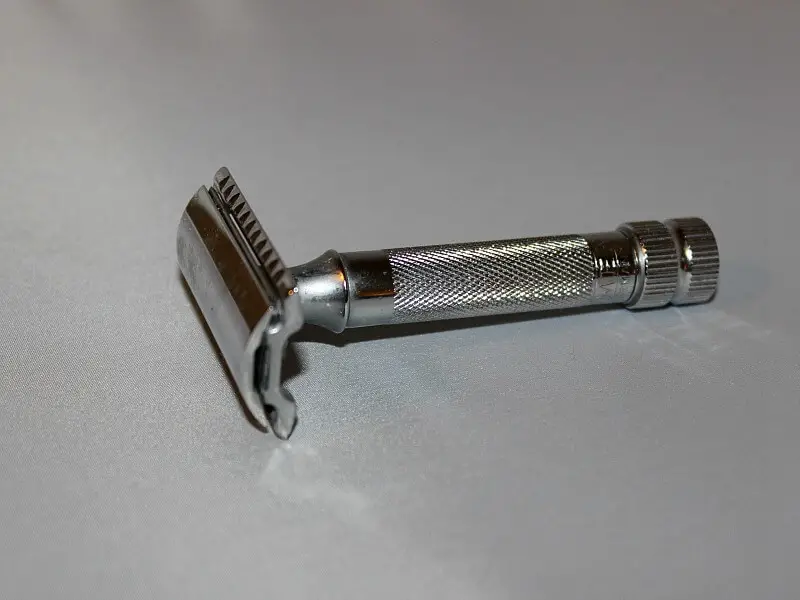
This is the range where you will find the enormously popular Merkur 34c (AKA “Heavy Duty,” “HD,” or “Heavy Classic,”) and Edwin Jagger DE89 series (differing only in the type of handle offered: the “lbl” handle variant appears to be the most popular but there are a wide variety of handle styles). These razors remain popular even with all the changes in the market over the past few years.
Click/tap here for my review of the Merkur 34c.
Click/tap here for my review of the Edwin Jagger DE89.
High-End And Premium Ranges
Above this price point is where you will find razors that are popular for reasons other than (or in addition to) performance. Different head styles (such as “slant” razors as discussed below), special features (including adjustable razors), and razors designed specifically for travel situations are examples of this category.
At the high end of the range ($200+) you will find the “premium” razors. Not too many years ago the Feather AS-D2 All Stainless Steel razor was considered the high-end DE razor (click/tap here for my review of the AS-D2). Now it’s practically “bargain basement” (for its class): the past couple of years have seen an explosion of artisan-made, luxury-priced razors with premium materials (like stainless steel or titanium. Most razors are made of chrome plated metal alloys) and special handle designs.
Some of the names often associated with excellent premium-priced razors include (in no particular order) Timeless, Charcoal Goods, Blackland, and Karve. RazoRock produces a stainless steel razor (the “Game Changer”) at a break-through price point.
The high end market of artisan-made razors has contracted a bit. There may be more supply than demand.
New vs. Used vs. Vintage
The next factor for finding the best DE razor is whether it is new, used, or vintage. A new razor is just that: in production, for sale, and not previously used. A used razor is one that is currently in production but has been used before. A vintage razor is one that is out of production (both used and “new old stock”–often referred to as NOS).
The previous section described popular new razors. You can get used versions of many of these same razors for probably around 75% of their new price–they generally hold their value pretty well. Resale prices for some artisan-made, premium razors can be insanely high–sometimes multiples of the razor’s original price. Vintage prices can be “all over the road” depending on condition and the seller’s knowledge (or lack of knowledge).
There are a number of sources for used or vintage razors, including local antique stores and flea markets (though availability at these places has dropped in recent years), internet auction sites, and buy/sell/trade sections of the internet shaving forums. Maybe even a forgotten razor in an older relative’s bathroom? Local stores have the advantage of having something you can see and feel–you are more likely to know to what you are getting.
Internet auction sites can be useful if you know what you’re doing and are looking for something very specific…though there is always the danger of seller shenanigans. The B/S/T areas on shaving forums are probably the place most likely to get a decent razor for a fair price. These areas sometimes have “PIF” offers as well: a user wanting to “Pay It Forward” by offering a razor at little or no cost to a new shaver, a member of the armed forces, or for some other reason.
Two excellent “vintage” DE razors include various versions of the Gillette SuperSpeed, and the Schick Krona–read How To Buy A Vintage Razor From Ebay for more information on what to look for when buying a vintage razor.
Double Edge Razor Construction: Open Comb vs. Safety Bar
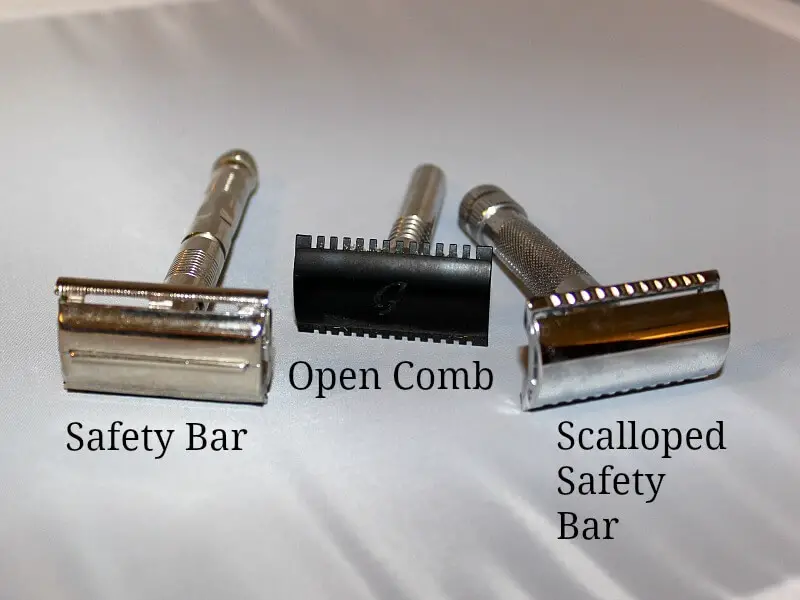
Safety razors have heads that can be divided into two general groups: Open Comb and Safety Bar. Open Comb safety razors have obvious “teeth” that help guide heavy stubble and shaving cream into channels. Safety Bar (sometimes referred to as closed comb) razors have a solid (or scalloped) bar that provides some additional protection to the skin from the blade’s edge.
Generally, Open Comb razors will not be as gentle on the skin as safety bar razors (some notoriously so), though there are exceptions. Most older vintage razors will have an Open Comb. A few brands try to distinguish themselves in the market by offering razors with “hybrid” heads where, for example, one side of the razor’s head has an open comb and the other side has a safety bar.
Double Edge Razor Construction: Three Piece vs. Two Piece vs. One Piece (“Twist To Open” or “Butterfly”)
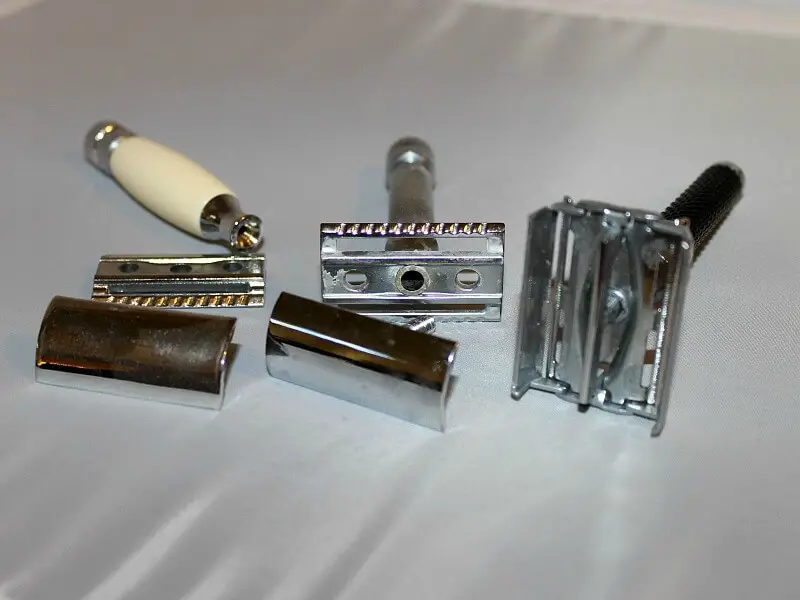
DE razors are typically constructed in one of three ways. A three piece razor is the classic” (and easiest to manufacture) type, consisting of a handle, a base plate, and a head or cap. An advantage of a three piece design is that you can sometimes “mix and match” the three pieces from different manufacturers, creating entirely new razors (you’ll sometimes see this referred to as a “Frankenrazor” after Frankenstein’s monster). A two piece razor has the base plate permanently mounted to the handle. A one piece “twist to open” (TTO) or “butterfly” safety razor was the type most common just before the ascent of modern cartridge razors: the Gillette SuperSpeed is the classic TTO.
Set Gap vs. Adjustable
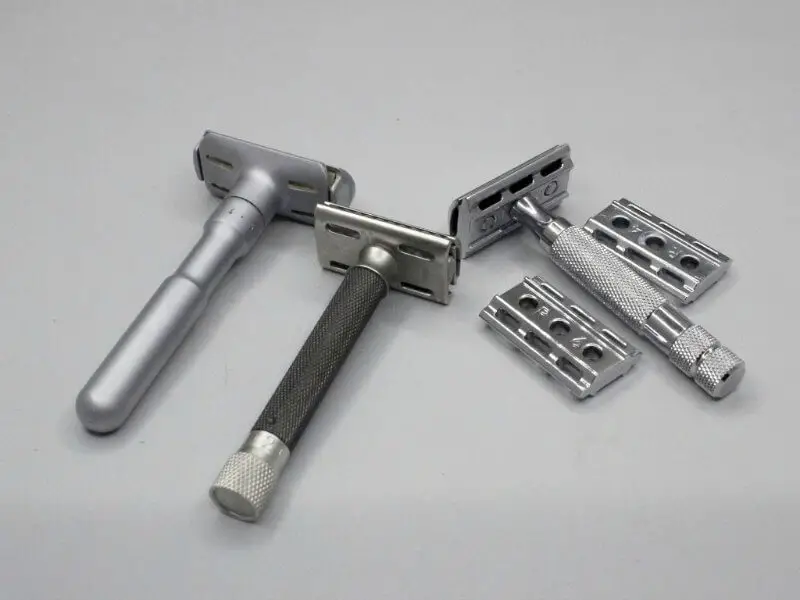
The vast majority of razors have a set gap space, the distance between the razor blade’s edge and the razor’s skin safety bar: the amount of the gap distance is determined by the manufacturer for a particular model of razor. Generally speaking, Open Comb razors expose more of the blade to the skin, making for a more “aggressive” shave. But even razors with a safety bar can be aggressive: it’s all about the amount of blade exposed to the skin.
However an adjustable safety razor can change the gap to make them more gentle or more aggressive. There used to be few fully adjustable razors, such as the Parker Variant and the Merkur Futur, but others have entered the market–click/tap here to read my article about adjustable razors. There are also some vintage adjustable razors.
A variation of the adjustable razor design is the use of multiple base plates. The Rockwell 6S was the first modern DE razor to popularize this feature (click/tap here to read my article on the 6S). These razors are not “adjustable” in the normal, continuously-adjustable sense, but rather they offer different base plates: each plate has a different amount of blade exposure set. Other manufacturers are picking up on this theme, offering different base plate options with some razors.
“Slant” Razors
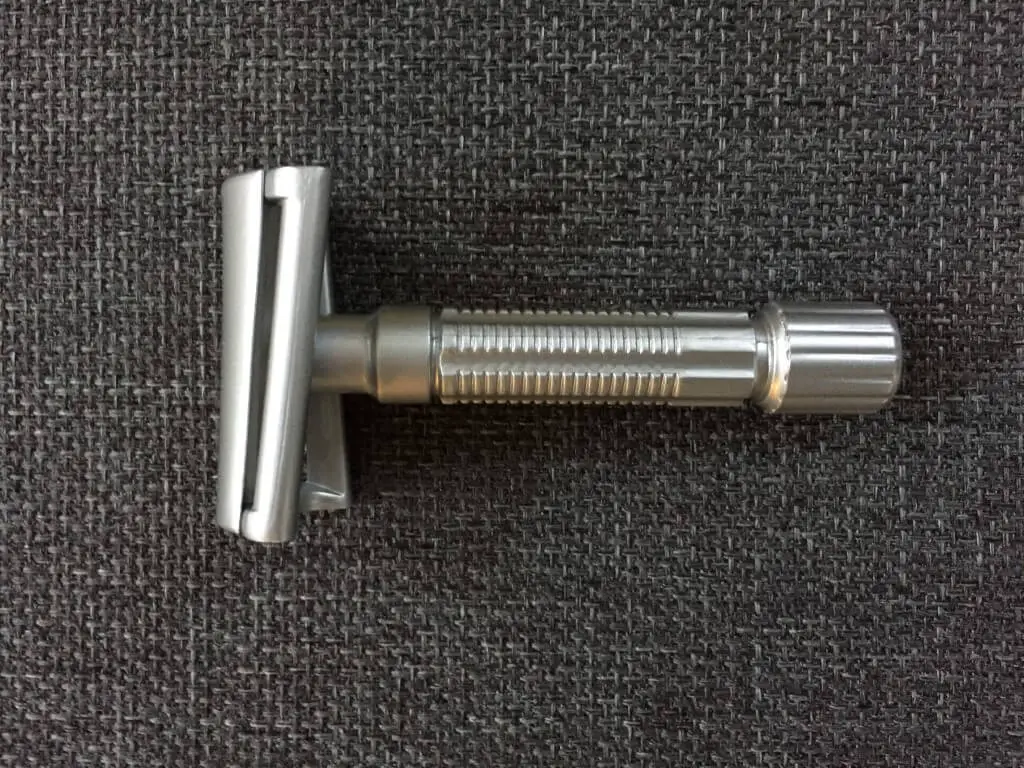
What is a slant razor? Think of it like a mini-guillotine for stubble. Held at an asymmetrical blade exposure by design, the slant is meant to offer a more efficient cutting angle for a DE blade which can give a closer shave more quickly. The design has been around for at least 70 years, but as the DE razor lost popularity beginning in the 1970’s, most slants also vanished from the market. This niche’ was beginning to re-assert itself a couple years ago, but the demand for them apparently did not justify continued artisan interest and there are fewer options available today. However there are still a few around:
Click/tap here for my review of the Merkur 37C
Click/tap here for my review of the Parker “Semi-Slant.”
What About The Best Safety Razor Blades – A Further Caution To The Beginner
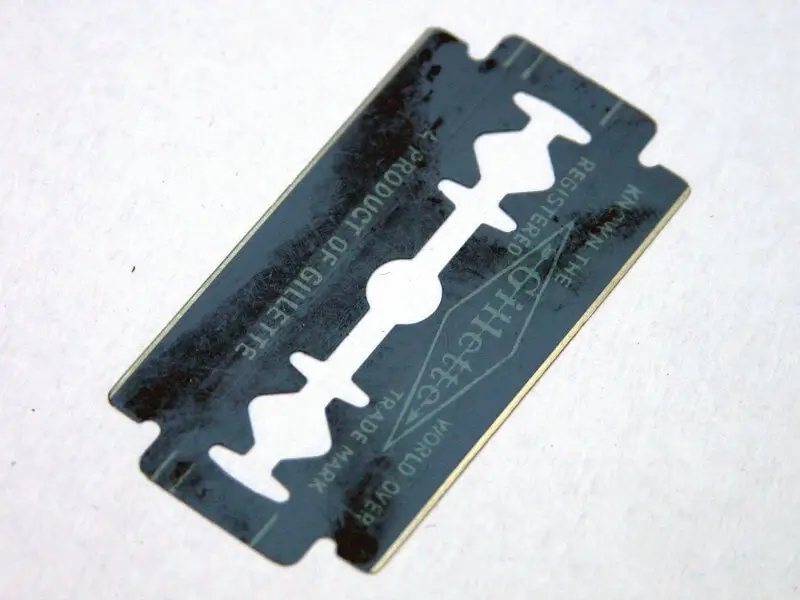
No discussion about the best DE razor would be complete without mentioning blades. Many beginners think “a blade is a blade” and while DE blades may all look similar there can actually be fairly significant differences in the way a blade is made. Metallurgy (the metal or combination of metals used to make the blade), coatings, and grinding specifications (the blade’s “sharpness”) can all play a part in the razor blade production process.
So take the time to try a number of different blade brands to find the one(s) that work best for the razor you’re using (your skin, the mineral content of the water you’re using, and the shave lather you’re using play parts too). Even if you are already using a DE razor you may need to do some additional blade experimentation if you buy another DE. It will made a difference in your shaving experience.
Some shaving vendors sell “sample packs” or “blade samplers” to make the process easier: you get a few blades of many different types. After you decide which one(s) work best you can then buy your favorites in bulk, saving a ton of money!
A Final Note
Shaving with a DE razor — even the best safety razor — is not quite like shaving with a modern pivoted cartridge razor: you can’t just take mindless swipes at your face and expect a smooth shave, especially if you have sensitive skin. You have to learn a new skill set (and possibly unlearn some bad habits) to use a DE razor properly. It’s not a terribly difficult skill to pick up but there is a learning curve. And like learning to ride a bike or play a musical instrument some will pick it up more quickly than others. Luckily, I have a few videos to help you out!
Over to you! What do you think? (Find this article useful? Be sure to share it!)

My vote goes to the Henson razor. I have used several high end razors, Cobra classic, Weber, One Blade, Leaf, Merkur Slant,etc.. The Henson mild gives me the smoothest 3 pass shave I have experienced.
I’m a recent cartridge convert and am extremely happy with Hensen’s AL13 in both Mild and Medium (+ and ++). These are very easy to learn to use, and at least for me there has been no penalty for poor technique except uncut whiskers.
Great article. I purchased a Timeless .95 about 2 ½-3 years ago. I had a rotation with about 4 razors. For the past year, I’ve only used the Timeless. It’a a remarkable razor in every way. Construction, quality of shave, soooo smooth, aesthetics. I’ve often thought of other razors as “this is the one” only to change my mind. Not with the Timeless. It’s name is fitting!
I was interested to see that the Merkur 34C is the most popular razor. In my experience, the Mühle/Edwin Jagger head design is noticeably better (and certainly that head design is widely copied). Perhaps the use of the Mühle/EJ head on many different models results in no single model having the market presence of the older 34C.
Full disclosure: I did initially use the 34C — in part because it was the standard recommendation. However, when EJ made the switch to from the Merkur head design to the new design jointly developed with Mühle, I found that new design to be more comfortable and efficient than the 34C. That’s not surprising, of course since obviously EJ would want to design a razor head better than the one they had been using. Otherwise, what’s the point?
As I note in the article ‘popular’ does not necessarily equal ‘better.’ I did take the different EJ/Muchle handles into account while I was gathering the data.
Having picked up Timeless in stainless, titanium, and bronze, they have easily become my favorite modern DE razor
I would like to know, is it ok to shine or polish your DE razor with toothpaste?
No such thing as “The Best”, it’s all a matter of technique and preperation…
Prep and technique are important but you can’t ignore razor design and construction.
Why is Wolfman not on this list?
Wolfman was an excellent razor but new inventory has been…sporadic. I don’t want to list a razor you can never buy.
It was a great article. Although you nentioned the Mühle R41, as the best aggressive razor, you neglected to mention the variants of the R41, namely the R101 and R102. The R101 and R102 have different handles, but the same R41 head.
Mark As always nice work. Gillette made Super Speed razors, I am thinking from 1940s until 1980s. You say the best Super Speed is 1955. I was wondering why that year?
Thanks Fred
Comments are closed.